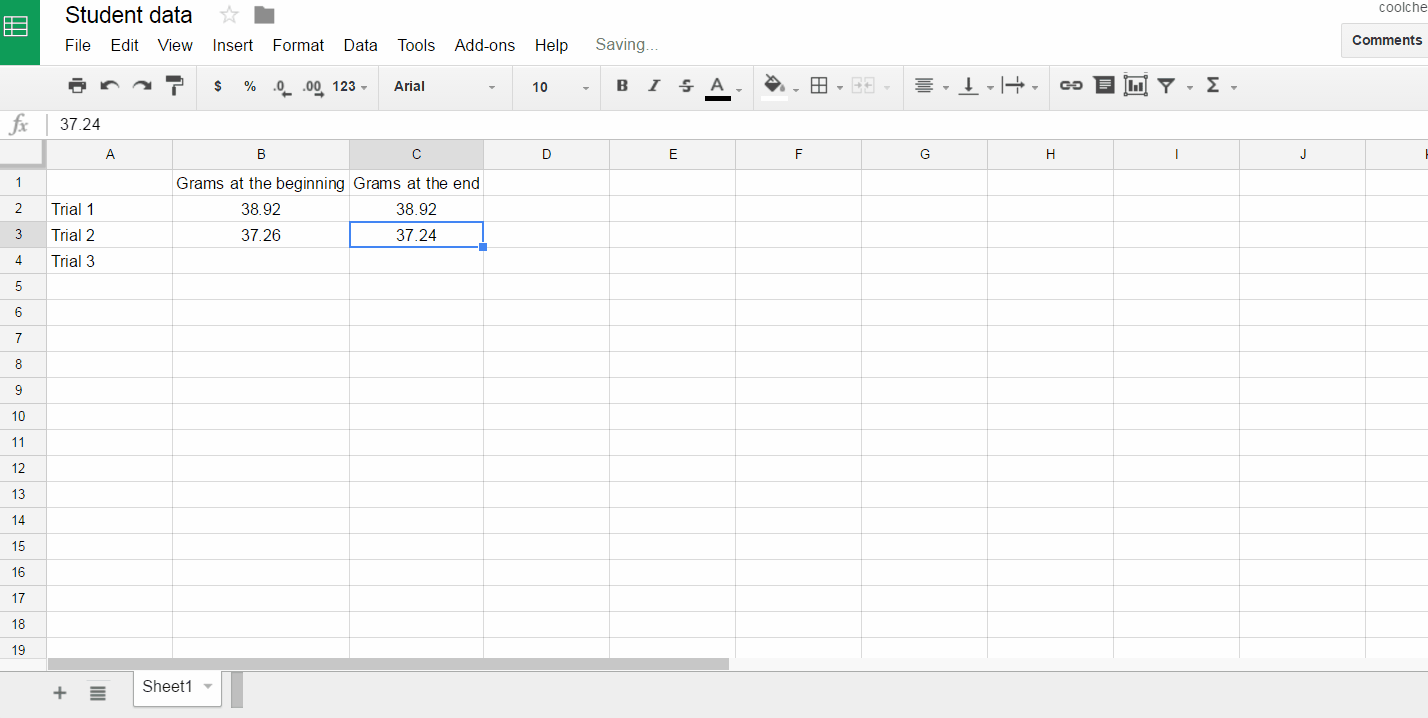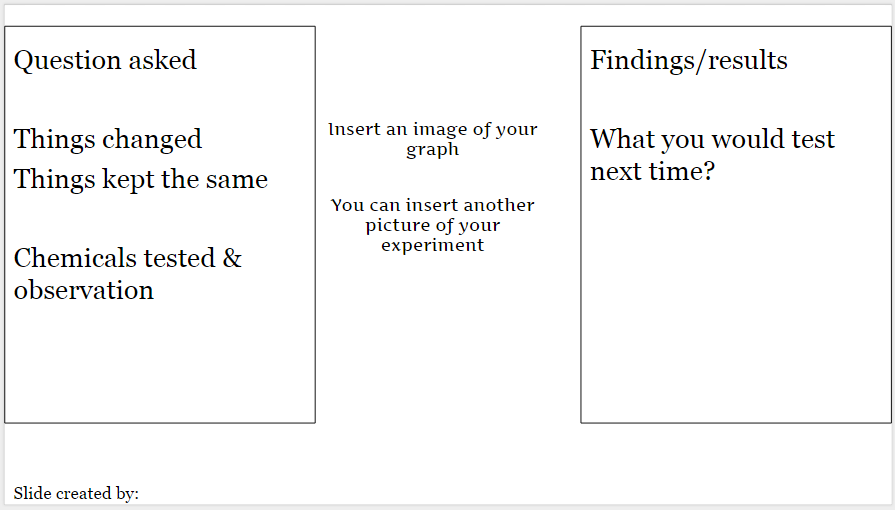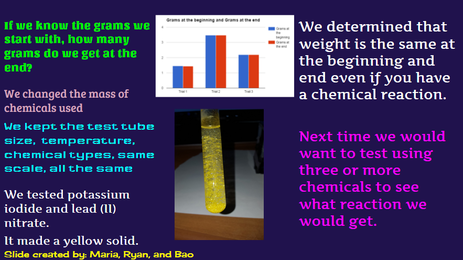5th grade Science Lesson
Lesson Background
This lesson focuses on 5th grade science as part of a unit on matter and its interactions. It assumes that it is later in the school year, students have science notebooks, and have previously been introduced to recognizing whether chemical reactions have occurred (5-PS1-4). Depending on the length of the science periods, this lesson can be expanded or contracted by controlling the complexity of the investigations. It is intended for students to work in groups of 3 for the duration of the lesson, though groups of 2 to 4 could be appropriate based on materials and ability.
Engage
|
|
|
|
Explore
|
Explain to students what they will do today:
|
|
Explain
|
|
Elaborate
|
You decide to test this Law of Conservation of Mass at home in the kitchen.
You and your family make a loaf of homemade bread and weigh it before putting it in the oven. You weigh it again after you take it out of the oven and you find that it weighs less! Did you just prove the Law of Conservation of Mass wrong?Propose an explanation for what happened. |
Evaluate
|
|
Standards Addressed in this Lesson
|
Next Generation Science Standards
|
ELA/Literacy Standards
|
ISTE Standards for Students
- 1. Creativity and innovation: Students demonstrate creative thinking, construct knowledge, and develop innovative products and processes using technology. 1a, b, c, & d.
- 2. Communication and collaboration: Students use digital media and environments to communicate and work collaboratively, including at a distance, to support individual learning of others. 2a, c, & d.
- 3. Research and information fluency: Students apply digital tools to gather, evaluate, and use information. 3d
- 4. Critical thinking, problem solving, and decision making: Students use critical thinking skills to plan and conduct research, manage projects, solve problems, and make informed decisions using appropriate digital tools and resources. 4b
- Communication
- Collaboration
- Critical Thinking and Problem Solving
- Creativity and Innovation








